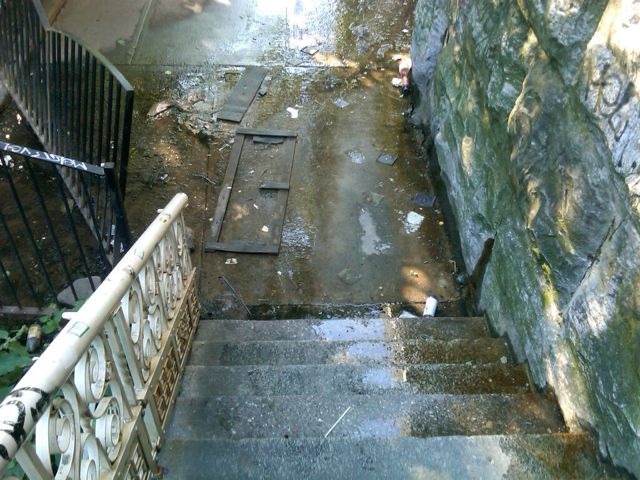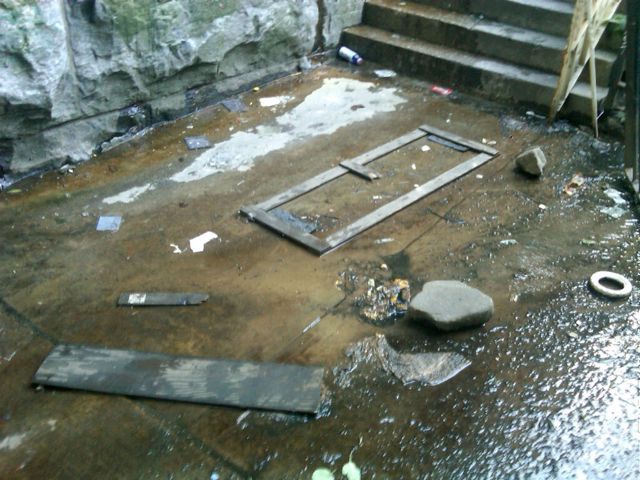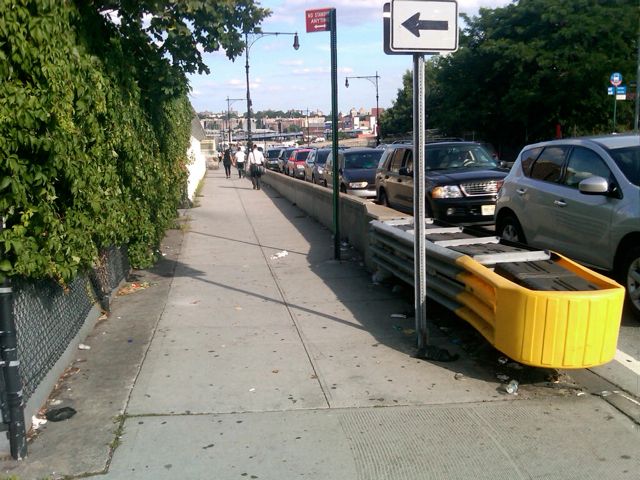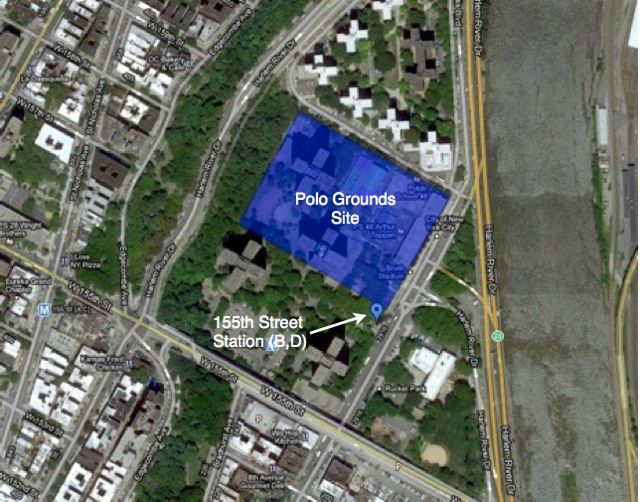Last Chance to Catch NYC's Holiday Notalgia Train
We met the voices of the NYC subway on our nostalgia ride this weekend!


Not many New Yorkers know of or have the need to use the B & D station at 155th on 8th Avenue, but my work takes me across the river to the greener pastures of the Bronx, and due to a grand miscalculation in my Manhattan apartment selection, the closest subway station that takes me to the borough of ill repute is one that has plagued commuters for nearly eighty years.
Or has it? What at first seems to be a haphazardly placed subway station is actually a station rich in a history lost to both New York City and the game of baseball.
As a Californian, walking through New York has done wonders to tone my legs. Having to hike across the city is something that I normally enjoy, but I never expected something like this.


It took me a while to find out that I actually had to use these stairs. When I first looked for this station, I ended up standing at the western entrance of the Macombe Bridge wondering where to catch the B or D train.

It wasn’t until after I tried to think like the MTA that I realized the entrance would probably be in the most inconvenient location possible.
I don’t typically use articles to rant and harangue various parties, but the MTA had it coming here. It has gotten to the point where I have heartfelt conversations with my common man as we pause to catch our breathe and drain a Gatorade or two on these stairs in the miserable New York summer. Just last week, I spoke to a father as his son was sent up and down the stairs five times as punishment for losing his basketball game at nearby Rucker Park.

Before I placed the blame squarely on the MTA for this atrocity, I wanted to learn a little more of what was going on. I initially attributed this sinister “ped path” to the shifting geography of Manhattan as you traveled further. From gentle slopes to a daunting crag, the increasing elevation requires an elevated infrastructure for bridges and expressways in order to get New Yorkers around the tri-state area. But the fact remained that historic city planners allowed development under and around these structures. This not only created horrible housing access but also put transportation engineers in a huge bind to service these locales. Insert this stop.
However, when I noticed that the 30-story public housing buildings surrounding the stop were called the Polo Ground Houses, I remembered that the Polo Grounds once hosted my beloved baseball team, currently known as the San Francisco Giants. That’s when I realized that the station must have been created to service the Polo Grounds Stadium, one of the original pillars of baseball.

The Polo Grounds dates back to the 1800’s when its first incarnation was located near Central Park, where both the New York Mets and New York Gothams (later to be renamed the Giants) played. Just before the turn of the century, the Giants were moved to the new and improved Polo Grounds nestled between 155th and 157th along 8th Avenue. Originally constructed of wood, this stadium once held the largest capacity in all of baseball with over 31,000 seats prior to a fire that burned the stadium to the ground in 1911.
From the ashes, rose a new Polo Grounds stadium made of steel and concrete. However, the rigidity of the stadium did not transfer over to the game being played within it. Baseball was still in its infancy as a legitimate sport, and many of the strict rules that are followed today were not yet in place in the early 1900’s. Skewed foul lines routinely allowed pop flies to become homeruns with the shift of the wind, and the excruciatingly long 455-foot centerfield wall was nearly impossible to reach by even the most powerful hitters.
Known more appropriately by its nickname “The Horseshoe” in later years, the stadium stacked grandstands on each other, eventually giving itself the trademark horseshoe appearance and a seating capacity of over 50,000 by the 1920s.
The Polo Grounds was put to rest on September 18th, 1963 with a final game between the Mets and the Philadelphia Phillies. There were only a little over 1500 paying customers for the final game in which the Mets lost 5-1. And in typical New York fashion, within a year the site would be redeveloped and become home to a brand new housing development named in honor of the Polo Grounds.
During its years hosting the nation’s pastime, the Polo Grounds served as the home field for many teams: the Mets, the Giants, before they moved to San Francisco in 1957, and even the Yankees before they built their own stadium.
The modern day 155th Street Station actually dates back to one of the many stops of the Independent Subway System (IND) which predated the MTA. In New York City subway history, there were initially three separate subway systems. The IND was fully government owned and operated, and the other two were a joint public-private venture. Originally called the “Eighth Avenue Line,” this system’s lines encompassed what are now the modern day A, B, C, D, E, F, and G lines which serviced all but one of New York’s boroughs. The “Concourse Line” as it was called, opened in 1933 with the C train initially running through the 155th Street Station while being supported by the D train at all times except for rush hours. It wasn’t until 1998 that the C was replaced by the modern day B Train.
After learning the entire story of the Polo Grounds influence on this stop, I couldn’t really blame the MTA. It remains for historians to decide whether the placement of this station was influenced by the glory of baseball or by the city’s desire to create a municipally owned subway system. But still I ask, where is the ADA compliance? In order for residents of the Polo Grounds and surrounding area to get to and from the rest of Washington Heights, they are forced to trudge through the grimy, fermenting garbage and moss-covered concrete only to climb a demoralizing flight of stairs, straining their gluts and hammies all the way to the top.
The MTA has claimed that they will do necessary renovations to the station itself, but no notice has been provided as to when these renovations will take place nor whether any change will be made to the stairs themselves.
As for me and the other residents who are forced to use these stairs during their commute, we can only wait and hope that something is done to correct this. Still, whenever I finish climbing the stairs to the intersection of 155th Street and Edgecombe Avenue, I can’t help but look out from the top to the Harlem River and imagine what it must have been like to hear the crack of the bats, the roar of the crowd, and bear witness to one of the most prolific stadiums the game of baseball has ever seen.

All photos by Trevor Shanklin.
Subscribe to our newsletter